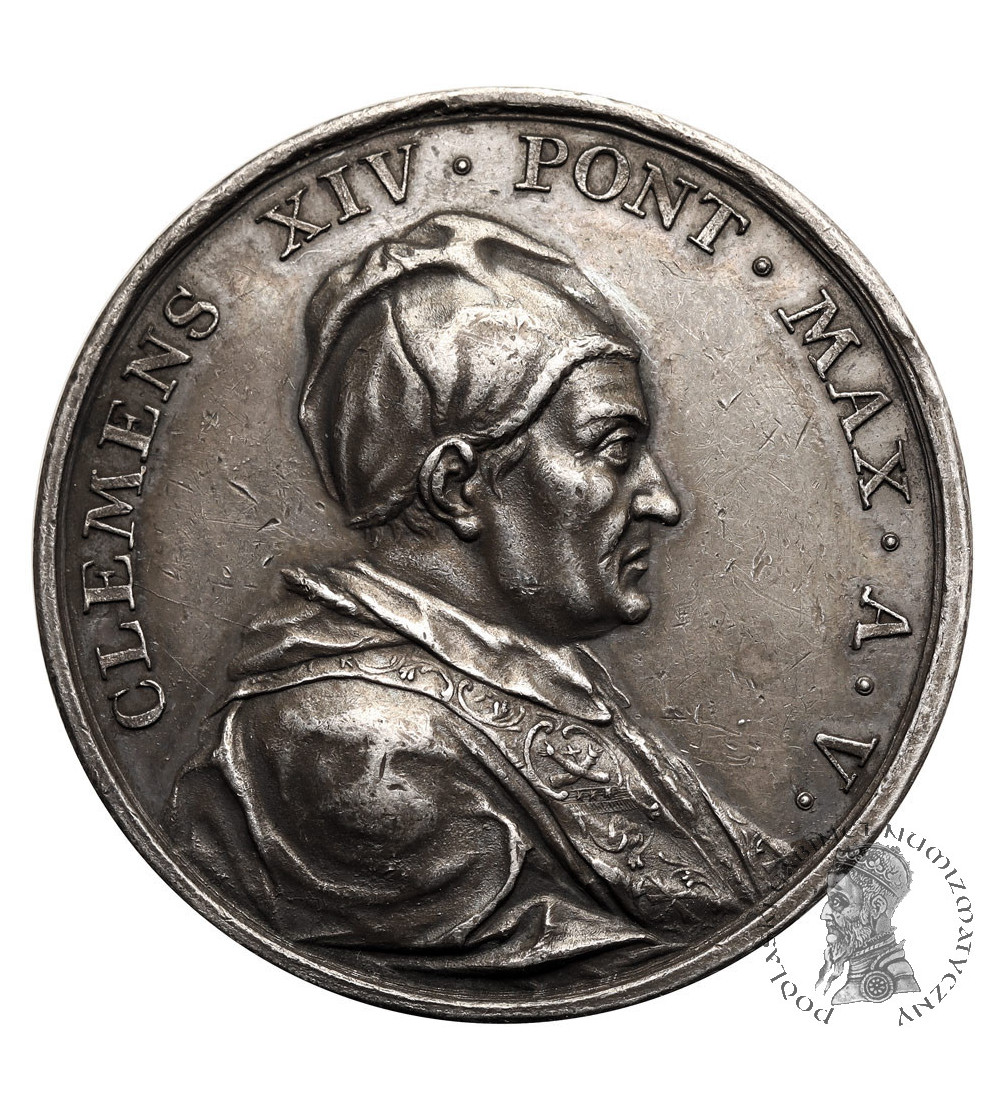




Papal States, Clement XIV Ganganelli (1769-1774). Medal 1773 commemorating the suppression of the Jesuit order, by Theodore van Berckel, Lincoln 1928, van Loon, Vervolg, 486, Silver 39 mm, weight 22,40 g., Condition VF, patina, minor edge nicks
In 1773, Pope Clement XIV, under pressure from Bourbon courts hostile to the Church and the Society, dissolved the order.
At the time of the order's suppression, it numbered 2341 Jesuits, 56 colleges, 20 residences and 65 mission stations. After the dissolution of the order, the Jesuits were taken in by Tsarina Catherine II, and Belarus became the only legal center of Jesuit activity.
After the first partition, in 1772, the eastern territories of the Polish-Lithuanian Commonwealth were incorporated into Russia. Many Jesuit centers were located there. Catherine II, in keeping with the ideas of the Enlightenment, respected our education and assigned the Jesuits the mission of dealing with education in the so-called “western country.” As a token of her affection, she offered them St. Catherine's Church in St. Petersburg, which is now occupied by Dominicans. Fortunately for the Jesuits, the Tsarina did not read the 1773 papal breve Dominus ac Redemptor noster on the order's suppression, and this was a condition - due to the nature of the papal document - for the Society's liquidation.
One of the reasons for the removal of the Jesuits was that they were suspected of violating the ban on converting to Catholicism. In the 19th century there were several cases among the Russian aristocracy of conversion to Catholicism. Another reason was the dislike of the intellectual circles of Moscow-Petersburg for the Jesuits. Alexander I, on the other hand, had plans to reform Russian higher education. It was under pressure from these circles that he decided to expel the Jesuits.
A total of 21 Jesuit houses were abolished at the time, including the Polotsk Academy educating some 700 pupils and students, as well as subordinate colleges. The schools and missions were taken over from the Jesuits by the monastic and diocesan clergy, while the landed estates fell to the state Treasury Chambers. Alexander I's memorandum of March 13, 1820 forbade the Jesuits from entering the Russian monarchy. They were expelled from the entire Russian Empire, and only a few managed to stay and work in the missions until 1827. Shelter, after hard bargaining with the Emperor, was obtained in the territories of Galicia, so that in 1827 they were legally allowed to develop their pastoral activities. The speeding intellectual train could no longer be stopped by anyone.
However, the decree of cassation was not promulgated in the lands incorporated into Russia in the first partition of Poland, and there the order continued its activities until it was restored in 1814.
source: jezuici.pl